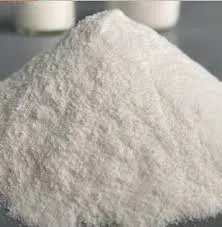
Lis . 27, 2024 15:19 Back to list
Exploring the Characteristics and Applications of HPMC in Various Industries
Understanding HPMC Properties A Comprehensive Overview
Hydroxypropyl Methylcellulose (HPMC) is a versatile derivative of cellulose that plays a pivotal role in various applications across multiple industries, including pharmaceuticals, food, construction, and cosmetics. Its unique properties make HPMC an essential ingredient in many formulations, contributing to enhanced performance, stability, and consumer experience. This article delves into the critical properties of HPMC, exploring its composition, functional characteristics, and applications.
Chemical Structure and Composition
HPMC is synthesized from cellulose, which is a natural polymer found in the cell walls of plants. The modification process involves the introduction of hydroxypropyl and methyl groups to the cellulose backbone, resulting in a compound that exhibits increased solubility in water and improved binding properties. The degree of substitution (DS) of these groups determines the solubility, viscosity, and other functional characteristics of HPMC.
The HPMC products are categorized based on their viscosity grades, which can be influenced by the concentrations of hydroxypropyl and methyl groups present. This variability allows manufacturers to tailor HPMC for specific applications, ensuring optimal performance in each context.
Physical and Chemical Properties
One of the essential properties of HPMC is its excellent water solubility. It can dissolve in cold water, forming a clear, viscous solution, which is crucial in many applications, including pharmaceuticals, where it is used as a binder, film-former, and controlled-release agent. Its solubility can be adjusted by modifying its chemical structure, making HPMC suitable for use in both aqueous and anhydrous formulations.
HPMC also exhibits thermoplastic behavior, which means it can soften when heated and harden upon cooling. This property is advantageous in construction materials where HPMC is used as a thickener and stabilizer in cement and mortar, improving workability and enhancing adhesion.
Furthermore, HPMC serves as an effective emulsifier and stabilizer due to its hydrophilic nature. This characteristic helps prevent the separation of ingredients in food and cosmetic formulations, ensuring product integrity and consistency.
hpmc properties

Viscosity and Gel Formation
The viscosity of HPMC solutions can be tailor-made to meet specific requirements. The viscosity levels range from low to high, depending on the degree of substitution and concentration used in the formulation. In pharmaceutical applications, this property is essential for determining the release rate of active substances. HPMC can create gel-like matrices that release drugs in a controlled manner, enhancing therapeutic effectiveness.
The gel formation ability of HPMC is exploited in various sectors. In the food industry, it is used as a thickener, improving the texture and mouthfeel of products like sauces, dressings, and dairy items. In cosmetics, HPMC acts as a gel-forming agent, contributing to the stability and aesthetic appeal of creams and lotions.
Applications Across Industries
HPMC's multifunctionality makes it a go-to ingredient across numerous industries. In the pharmaceutical sector, it is widely used in tablet formulations, providing binding properties and controlling drug release. It is also employed in ocular formulations due to its biocompatibility and ability to retain moisture.
In the food industry, HPMC serves as a stabilizer, emulsifier, and thickening agent, enhancing the sensory attributes of products. The construction industry benefits from HPMC's water retention and adhesion properties, improving the workability of cement mixtures.
The cosmetic industry utilizes HPMC for its thickening and stabilizing capabilities in creams, lotions, and gels. Its safety profile and ability to provide a pleasant texture make it a preferred ingredient in personal care products.
Conclusion
In summary, HPMC represents a remarkable compound with diverse properties that cater to various industrial needs. Its unique chemical structure allows for customization, making it an indispensable component in pharmaceuticals, food products, cosmetics, and construction materials. Understanding HPMC's properties and applications not only highlights its significance in modern formulations but also opens up avenues for innovation in product development across multiple sectors. As industries continue to evolve, the demand for versatile materials like HPMC will only grow, underscoring the importance of ongoing research and exploration into its potential.
-
HPMC for Tile Adhesive: Superior Bonding & Workability
NewsAug.30,2025
-
Premium Cellulose Ether: Effective Liquid Thickener Solutions
NewsAug.29,2025
-
HPMC for Tile Adhesive: Enhanced Bonding & Workability
NewsAug.28,2025
-
tile-bonding-additives-for-stronger-bonds
NewsAug.22,2025
-
construction-grade-rdp-for-wholesale-needs
NewsAug.22,2025
-
trusted-hec-supplier
NewsAug.22,2025







